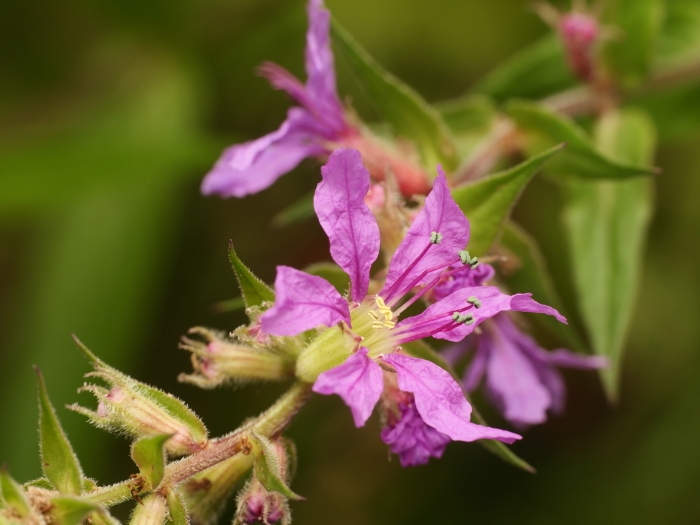Purple Loosestrife
(Lythrum salicaria)
Purple Loosestrife (Lythrum salicaria)
/
/

Alexis
CC BY 4.0









































































Estimated Native Range
Summary
Purple Loosestrife is valued for its striking floral displays and ability to adapt to various moisture levels, making it a popular choice for ornamental water gardens and naturalistic plantings. It thrives in full sun but can also tolerate partial shade. While it prefers wet conditions, it is adaptable to drier soils, provided they are kept moist. The plant’s adaptability, however, also makes it a potential invasive species outside its native range, where it can outcompete native vegetation and disrupt local ecosystems. Gardeners should be cautious and check local regulations before planting. In areas where it is not invasive, it can serve as an excellent choice for adding color to bog gardens, pond margins, and other water features.CC BY-SA 4.0
Plant Description
- Plant Type: Herb
- Height: 2-4 feet
- Width: 2-4 feet
- Growth Rate: Rapid
- Flower Color: Purple
- Flowering Season: Spring, Fall
- Leaf Retention: Deciduous
Growth Requirements
- Sun: Full Sun
- Water: Medium, High
- Drainage: Fast, Medium, Slow
Common Uses
Bank Stabilization, Bee Garden, Bird Garden, Butterfly Garden, Edible*Disclaimer: Easyscape's listed plant edibility is for informational use. Always verify the safety and proper identification of any plant before consumption., Hummingbird Garden, Salt Tolerant, Showy Flowers, Water Garden
Natural Habitat
native to wetlands, riverbanks, and damp meadows across Europe, Asia, Australia, and North Africa
Other Names
Common Names: Purple Lythrum , Spiked Loosestrife , Kattehale , Blut-Weiderich , Blutweiderich , Salicaire , Lythrum Salicaire , Salicaire Commune , Kattenstaart , Grote Kattenstaart
Scientific Names: Lythrum salicaria , Lythrum salicaria var. genuinum , Lythrum tomentosum , Lythrum salicaria var. salicaria , Lythrum salicaria var. gracile , Lythrum salicarium , Lythrum salicaria f. albiflora , Lythrum salicaria f. angustius
GBIF Accepted Name: Lythrum salicaria L.